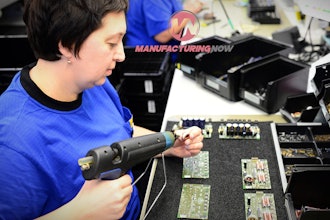
In Part One of this series, we discussed the importance of providing formal skills training and having open communication.
Without further ado, here are two more workforce tips:
4) Implement Cross-Training Initiatives
Cross-training is an excellent way to develop a more versatile and flexible workforce. You take an employee with a designated function within your organization, and then start to train him or her in a different role.
The goal is to develop this employee’s skills in other departments or capacities so that he or she becomes more well-rounded and adaptable.
Example: Bob works in your company’s marketing department. However, you bring him on the shop floor every Friday at 11:00 a.m. During this time, Cara, an experienced machine operator, trains Bob on how to use a special injection tool.
These weekly meetings help Bob develop skills in machine operation over time. Likewise, Cara goes into the marketing department on Tuesdays at 3:00 p.m. to learn marketing tasks. Four key advantages of cross-training include:
- a) Maintain Practical Production Levels During Unexpected Orders and Absences – If an employee is gone because of an illness or vacation, you now have a back-up employee(s) who can help complete critical tasks. Using the example above, if Cara catches the flu and is out for the week, or if the company gets a huge order, Bob can step up to the plate during certain parts of the week and assist using the special injection tool.
- b) Boost Team Appreciation and Understanding – Employees naturally want to be recognized for achievements, but additionally desire for others to realize the challenges and difficulties related to their positions. During cross-training, employees get a first-hand experience of a coworker’s job, enabling them to build a sense of appreciation for the work of others. “Oh, I never realized so much effort went into Cara’s task of x. How does she do it all?” “Who knew Bob went above and beyond the call of duty to get y completed!”
- c) Personal Job Development – In the scenario that neither Bob nor Cara are ever required to temporarily switch departments, this additional knowledge can still enhance their individual job performances. For example, Bob can use his knowledge about the special injection tool to develop new marketing campaigns about its features, attracting new customers.
- d) Inspire New Ideas and Efficiencies – Participating in the same routine day in, day out can get “comfortable.” Adding someone new to the mix adds in a fresh perspective, and a new individual can identify previously undiscovered efficiencies. Cara might be able to offer insight into how to solve a marketing problem that Bob was overlooking.
5) Implement a Formal Employee Engagement Program
An employee engagement program is critical to talent retention. Employees leave from time to time for reasons such as moving to another state or retirement. However, losing an all-star employee for preventable reasons hurts you both emotionally and financially.
There’s a negative impact on your company culture, and then come the expenses. There’s recruiting and related-administrative costs, lost time from interviewing and training, etc. There’s also lost productivity as your new employee(s) adapts to the learning curve. The time and resources used to recruit and train new team members can be better invested elsewhere.
Develop a program to evaluate your employee’s perception of your company. Do they feel valued and appreciated for their ideas? What are their suggestions for improvements? Unhappy employees can be just as damaging to a business’ bottom-line as poor products or processes.
The little things can go a long way. Quarterly out-of-office team building and networking dinners can be fun and boost team morale. Simple stuff like “waffle Wednesdays every month” can generate some laughs and a feeling of goodwill or once a month, have a mixer where members from different departments meet up in a relaxed atmosphere. The positive rapport and enhanced morale will make up for lost time on the job.
For more information about MEP workforce programs, visit http://www.nist.gov/mep/services/workforce/index.cfm.




















